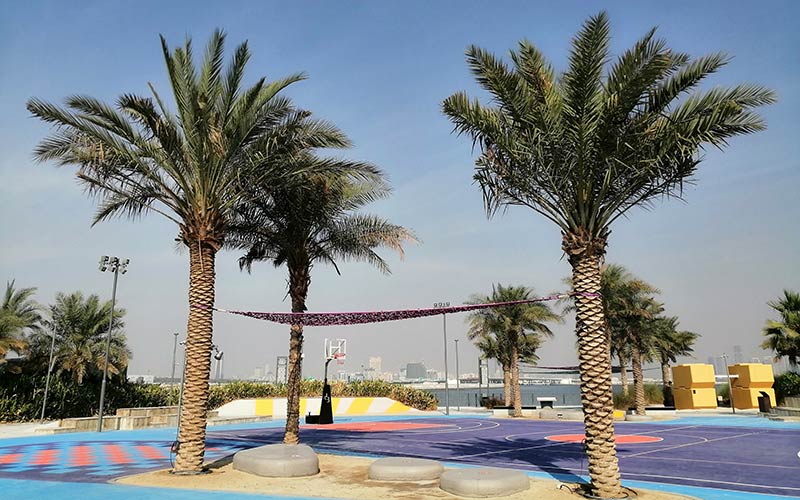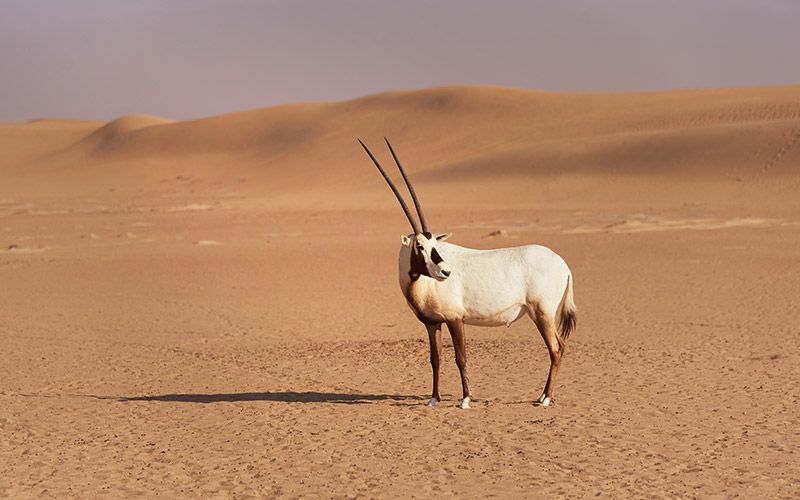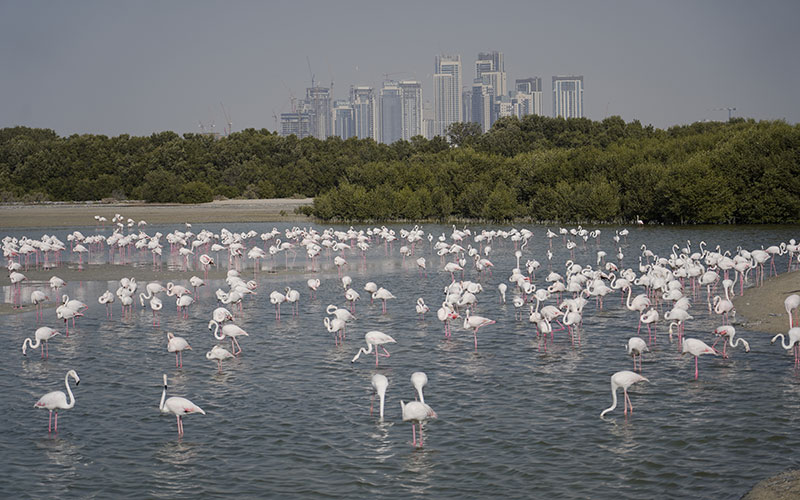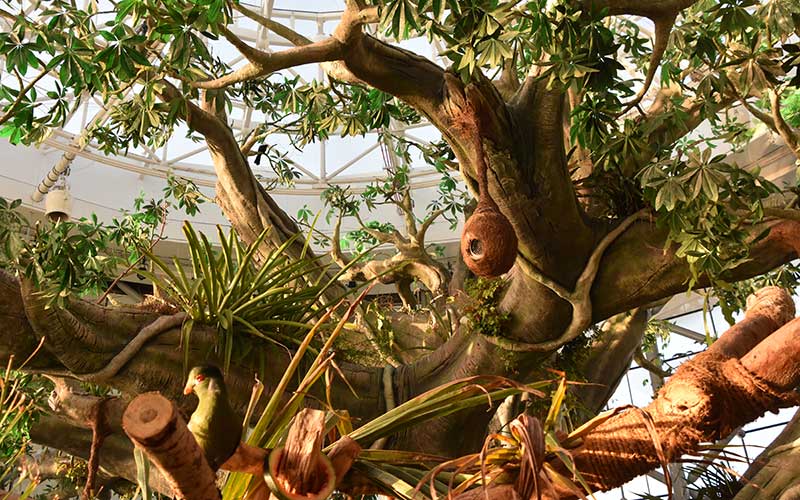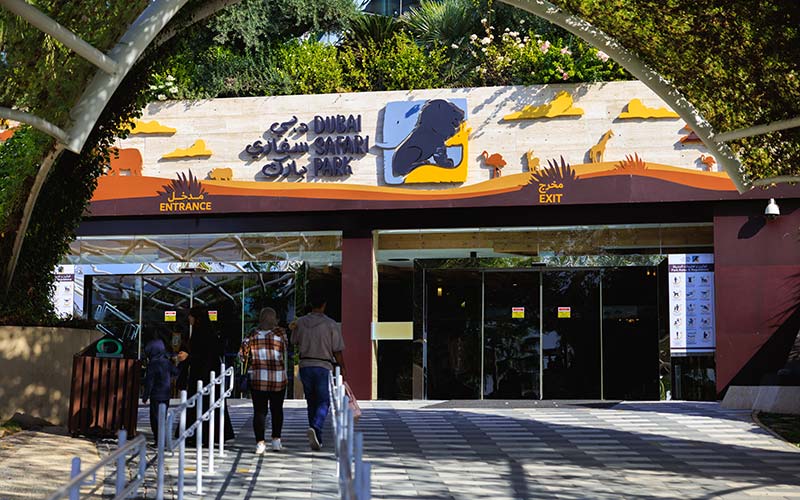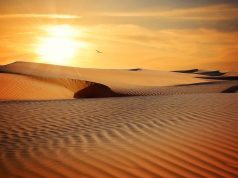Dubai is usually known for its luxurious 7 start hotels and towering skyscrapers, but did you know that it also has a vibrant ecosystem filled with unique flora and fauna? Wildlife encounters in Dubai offer a one-of-a-kind experience to explore the natural wonders of the desert.
From cacti to snakes, there are countless species waiting to be discovered.
Join us as we dive into the world of wildlife encounters, highlighting the importance of exploring this delicate ecosystem while promoting responsible tourism practices.
The Different Types Of Plants Found In The Dubai Desert
The desert might seem like an unlikely place to find plant life. But it is home to a variety of hardy species that have adapted well to survive in harsh environments.
Some of the most common types of plants found in the Dubai desert include:
1.Cacti
Cacti are succulent plants that are known for their ability to store water in their stems and leaves. They are commonly found in desert regions around the world, including the Dubai desert.
Examples of cacti that can be found in the Dubai desert include the golden barrel cactus and the saguaro cactus.
2.Date Palms
Date palms are one of the oldest cultivated trees in the world. They have been an important source of food and shelter for people living in arid regions for thousands of years.
They are well-adapted to survive in hot and dry climates and can tolerate temperatures exceeding 120 degrees Fahrenheit. Date palms are characterized by their tall, slender trunks and large, feathery leaves.
3.Acacia Trees
Acacia trees are common in the Dubai desert and are known for their ability to provide food and shelter for desert animals. These trees have adapted to the harsh desert environment by developing long roots that can reach underground water sources.
4.Thorny Shrubs
The Dubai desert is also home to various thorny shrubs like the desert thorn and the Arabian sweet bush. These shrubs have developed thorns and prickly leaves to protect themselves from herbivores and conserve water.
5.Ghaf Tree
The Ghaf tree is a drought-tolerant tree that is native to the United Arab Emirates and is considered the national tree of the UAE. It is a vital component of the desert ecosystem and provides food and shelter for a variety of desert animals.
Unique Adaptations Of Desert Plants To Survive In Desert
Desert plants have unique adaptations to survive in the harsh environment, including water storage, reduced leaf surface area, deep roots, Crassulacean Acid Metabolism (CAM) and succulence.
These adaptations allow the plants to conserve water and access it from underground sources while also minimizing water loss through transpiration and photosynthesis. The fleshy leaves of succulent plants can store water and have a waxy coating to prevent water loss.
Fauna Of The Desert
The Dubai desert is home to a diverse range of animal species that have evolved unique adaptations to survive in the harsh desert environment. These animals can be broadly classified into several groups, including insects, reptiles, birds, and mammals.
Some of the most common species found in the Dubai desert include:
1.Insects
The desert is home to a variety of insects, including ants, beetles, and scorpions. These insects have adapted to the arid environment by developing specialized exoskeletons that help to conserve water, as well as various behavioral adaptations that allow them to avoid the heat of the day.
2.Snakes
Several species of snakes are found in the dubai desert, including the desert cobra and the Arabian sand boa. These snakes are well-adapted to life in the desert and can survive for extended periods without water.
3.Birds
It is a popular destination for birdwatchers, with over 460 species of birds recorded in the United Arab Emirates. Some of the most common birds found in the desert include the lappet-faced vulture, the hooded wheatear, and the desert eagle owl.
4.Mammals
You can also find several mammal species, including the Arabian oryx, the sand gazelle, and the Arabian red fox. These animals have evolved a range of unique adaptations to cope with the extreme temperatures and scarce water resources of the desert.
All of these animal species are important components of the desert ecosystem, and their survival is crucial for maintaining the delicate balance of the environment.
Unique Adaptations Of Desert Animals To Survive In Harsh Environments
Desert animals have evolved unique adaptations to survive the harsh environment of arid deserts. These include:
- Concentrating urine to conserve water
- Being active at night to avoid the intense heat of the day
- Storing fat in specific body parts to dissipate heat more effectively
- Burrowing underground during the hottest part of the day to avoid the sun and conserve water,
- Obtaining moisture from food.
These adaptations enable desert animals such as camels, kangaroo rats, sand gazelles, desert tortoises, fennec foxes, and desert beetles to thrive in the desert.
Conservation Efforts For Wildlife Encounters In Dubai
Conservation efforts for wildlife encounters in the dubai desert are essential to protect the unique flora and fauna of this delicate ecosystem. Some of the key conservation efforts in place include:
1.Dubai Desert Conservation Reserve
The Dubai Desert Conservation Reserve was established in 2002 to protect the natural environment and wildlife of the Dubai desert.
It covers an area of over 225 square kilometers and is home to a variety of endangered and threatened species.
2.Sustainable Tourism Practices
Desert safari groups practice sustainable tourism, which involves minimizing the impact of human activities on the environment. This includes using environmentally friendly vehicles and reducing waste and pollution.
3.Education And Outreach
Education and outreach programs are in place to raise awareness about the importance of conserving the desert ecosystem. These programs target both tourists and locals and aim to promote responsible tourism practices and conservation efforts.
4.Protection Of Endangered Species
The desert is home to several endangered species, including the Arabian oryx and the Houbara bustard. Efforts are being made to protect these species and their habitats through conservation programs and breeding initiatives.
5.Restoration Of Degraded Habitats
Some areas of the dubai desert have been degraded by human activities such as off-road driving and overgrazing. Restoration efforts are underway to restore these habitats and protect the wildlife that depends on them.
Top Places To Witness Dubai Wildlife
Here are the top 6 places to witness Dubai’s flora and fauna in detail:
1. Ras Al Khor Wildlife Sanctuary:
Located near Dubai Creek, Ras Al Khor Wildlife Sanctuary is a protected area that provides a home for over 270 bird species. The sanctuary is particularly famous for its pink flamingos, which flock here during the winter months.
2.The Green Planet:
Dubai’s indoor tropical rainforest, The Green Planet, is a must-visit destination for nature lovers. This unique attraction is home to over 3,000 plants and animals, many of which cannot be found elsewhere in the UAE.
3.Dubai Desert Conservation Reserve:
Spread over an area of 225 square kilometers, the Dubai Desert Conservation Reserve is a protected area that offers a glimpse into the UAE’s desert ecosystem. The reserve is home to many desert-adapted species, including the Arabian oryx, which was once extinct in the wild but has been successfully reintroduced here.
4.Wasit Wetland Centre:
The Wasit Wetland Centre is a conservation area that provides a home for migratory birds during the winter months. Over 350 bird species have been recorded here, including flamingos, herons, egrets, and many more.
5.Dubai Safari Park:
The Dubai Safari Park is a massive wildlife reserve that covers an area of over 119 hectares. It’s home to over 2,500 animals from over 250 species, making it one of the largest wildlife parks in the UAE. Visitors can take a safari tour or explore different areas of the park on foot to see these animals up close. Animals that can be spotted here include lions, tigers, elephants, giraffes, and many more.
Conclusion
Exploring the flora and fauna of the desert ecosystem in Dubai is an incredibly rewarding experience. It provides a unique opportunity to witness nature’s adaptability, resilience, and beauty in one of the world’s harshest environments. By participating in wildlife encounters, visitors not only enrich their own understanding but also contribute positively to conservation efforts.
However, it is important to remember that responsible tourism practices are crucial for maintaining delicate ecosystems such as those found in Dubai’s deserts. You must respect wildlife habitats by staying on designated paths and avoiding any disruption to natural areas or animal behavior.

